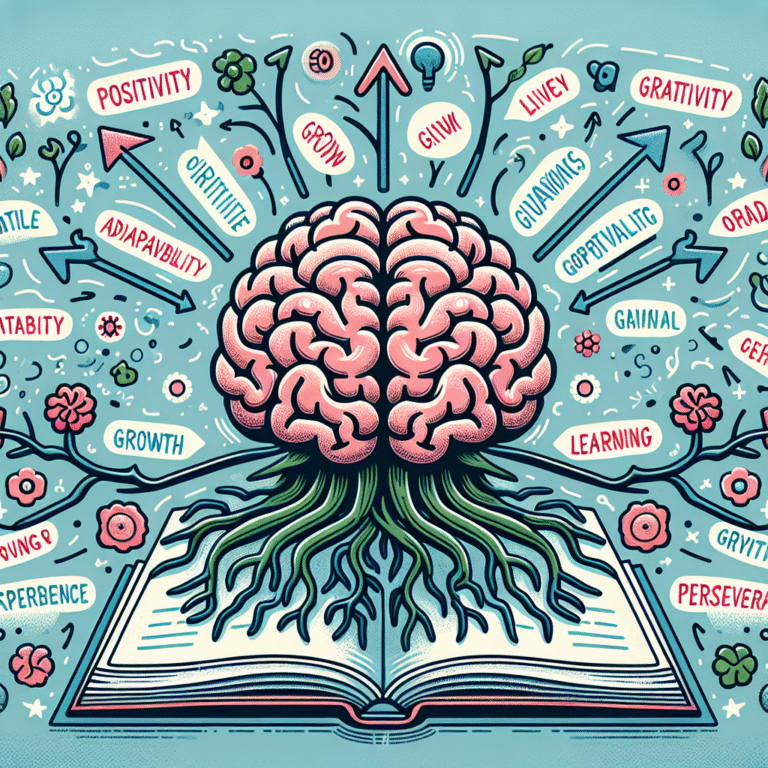
Introduction
In the ever-evolving landscape of education, the question is not just how we teach, but how students learn effectively. Engaging students in a meaningful way is crucial for their academic success and emotional well-being. The importance of collaboration and teamwork in the classroom is more significant than ever, as it fosters not only academic achievement but also essential social skills. This article will dive into the theme: Together We Learn: How Cooperative Strategies Enhance Student Engagement—exploring how these strategies can transform the learning experience.
Imagine a classroom where students actively participate, share ideas, and support one another’s learning journeys. This is not a distant dream but a reality that can be achieved through cooperative learning strategies. Let’s explore how these methods not only boost engagement but also create a sense of community, leading to stronger educational outcomes for all students.
Understanding Cooperative Learning Strategies
Cooperative learning refers to instructional strategies where students work together in small groups to achieve common goals. This pedagogical approach is rooted in the idea that learning is a social endeavor. When students engage with each other, they can share diverse perspectives and develop critical thinking skills in ways that solitary learning simply cannot facilitate.
Benefits of Cooperative Learning
- Enhanced Engagement: Students are more likely to participate when they feel accountable to their peers.
- Development of Social Skills: Working in groups teaches communication, conflict resolution, and teamwork.
- Cognitive Development: Cooperative strategies often require higher-order thinking, making learning deeper and more effective.
Key Cooperative Strategies for Enhancing Student Engagement
To unleash the full potential of cooperative learning, certain strategies can be particularly effective. Below are some key techniques that teachers can employ.
1. Think-Pair-Share
What it is: In this strategy, students first think about a question individually, then pair up with a partner to discuss their thoughts before sharing with the larger group.
Why it works: This method encourages all students to engage in the initial thought process, reducing anxiety around speaking in front of a large group.
Case Study: A fifth-grade class utilized this strategy while studying ecosystems. By first allowing students to think individually, then pair up, they shared more intricate ideas when presenting to the whole class. Teachers reported an increase in participation from quieter students, which illustrated how effective Together We Learn: How Cooperative Strategies Enhance Student Engagement can be.
2. Jigsaw Method
What it is: This method involves dividing a topic into sections, with each student responsible for learning and teaching their peers about a specific section.
Why it works: Each student becomes an expert, fostering a sense of ownership and investment in the learning process.
Case Study: In a high school history class, students were assigned different aspects of the Renaissance. After researching their topics, they regrouped to share insights. The teacher observed not only increased knowledge retention but also strengthened bonds among students, showcasing how cooperative strategies amplify engagement.
| Strategy Name | Student Engagement Impact | Skill Development |
|---|---|---|
| Think-Pair-Share | High | Communication, Critical Thinking |
| Jigsaw Method | Very High | Teamwork, Expert Knowledge |
Effective Group Dynamics
Implementing cooperative learning requires an understanding of group dynamics. Here are some insights into creating effective groups.
1. Group Size
Smaller groups (3-4 students) typically yield more engagement and effective collaboration. Larger groups risk some students fading into the background, diminishing accountability.
2. Diverse Group Composition
Mixed-ability groups encourage peer learning. Higher-achieving students can coach their peers, while lower-achieving students benefit from the support, enhancing Together We Learn: How Cooperative Strategies Enhance Student Engagement.
Role of the Teacher in Cooperative Learning
Teachers play a pivotal role in facilitating cooperation and ensuring accountability. Here’s how:
- Setting Clear Objectives: Establish clear learning goals for group tasks.
- Monitoring Progress: Actively circulate among groups to guide discussions and keep students on track.
- Debriefing: Post-activity reflection helps students articulate what they learned and how they can improve in future cooperative settings.
Challenges and Solutions in Cooperative Learning
While cooperative strategies can significantly enhance engagement, challenges often arise.
1. Unequal Participation
Challenge: Some students may dominate conversations, while others may remain silent.
Solution: Implement roles within groups—such as a facilitator, note-taker, and presenter—to ensure everyone participates.
2. Conflict Resolution
Challenge: Disagreements may occur among group members.
Solution: Teach conflict resolution strategies upfront, allowing students to navigate disagreements constructively.
Real-World Applications
The benefits of cooperative strategies extend beyond academic improvement; they help prepare students for the realities of a collaborative workplace.
Case Study: Elementary School Innovation
An elementary school in California adopted a project-based learning model employing various cooperative strategies. As students designed a community garden, they engaged in research, negotiation, and project management. Teachers noted improved engagement levels and a marked increase in the quality of academic work produced. The initiative showcased how Together We Learn: How Cooperative Strategies Enhance Student Engagement can lay the groundwork for future teamwork skills.
Measuring Cooperative Learning Success
To assess the effectiveness of cooperative strategies, educators can:
- Conduct surveys to gauge student satisfaction and engagement levels.
- Analyze academic performance before and after implementing cooperative learning strategies.
- Observe classroom interactions to see the dynamics of student collaboration.
Action Steps for Educators
To implement the ideas discussed, educators can take the following steps:
- Start Small: Integrate one cooperative strategy at a time into your lesson plans.
- Seek Feedback: After activities, ask for student input on their experiences.
- Collaborate with Colleagues: Share strategies and successes with fellow educators to foster a culture of cooperation.
Conclusion
Embracing cooperative strategies is not just about improving engagement; it is about revolutionizing how students connect, learn, and grow together. By adopting methods such as Think-Pair-Share and the Jigsaw Method, teachers can create an environment where learning flourishes. In a world where teamwork is increasingly essential, the ability to collaborate effectively will serve students well beyond the classroom.
As we champion the concept of Together We Learn: How Cooperative Strategies Enhance Student Engagement, let’s remember that the goal is not just to educate but to inspire a generation of empowered learners ready to tackle the complexities of the future.
FAQs
1. What are the core principles of cooperative learning?
Cooperative learning hinges on principles like positive interdependence, individual accountability, and group processing.
2. How can I address unequal participation in group settings?
Create specific roles for group members to ensure everyone has the chance to contribute meaningfully.
3. What subjects benefit from cooperative learning?
All subjects, including STEM and humanities, can integrate cooperative strategies to enhance engagement and learning.
4. How can I assess the effectiveness of cooperative strategies in my classroom?
Use student surveys, academic performance data, and observational methods to measure engagement and effectiveness.
5. Are there resources available for teachers wanting to implement cooperative learning?
Yes, various workshops, books, and online courses can provide insights into effective cooperative learning strategies.
By tailoring teaching practices to incorporate cooperative learning, we take significant steps toward nurturing engaged learners who are prepared for collaborative futures. Together We Learn: How Cooperative Strategies Enhance Student Engagement is more than a phrase; it’s a movement towards a more inclusive and effective education system.















